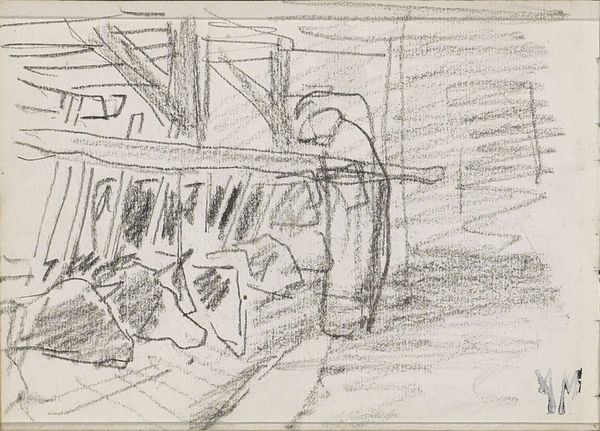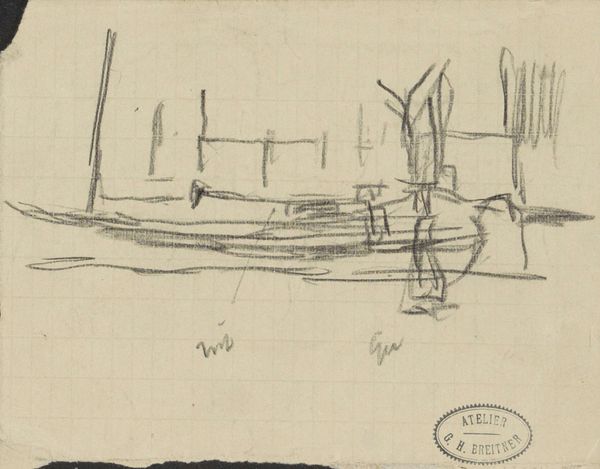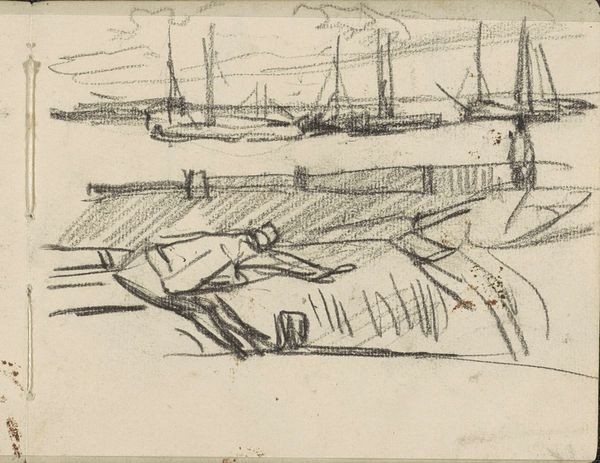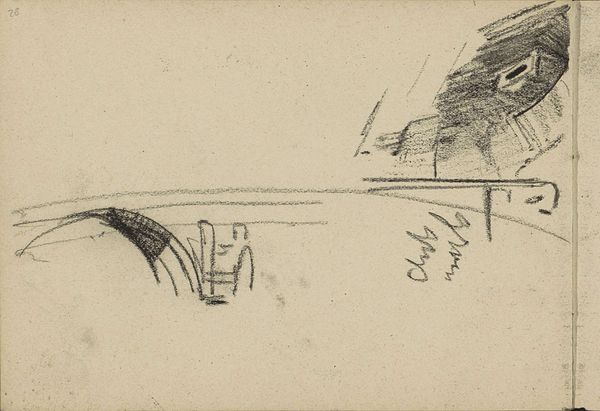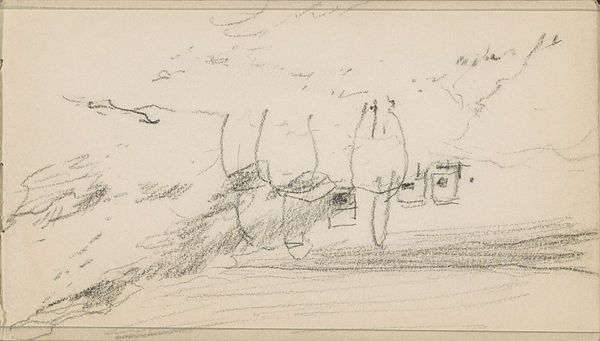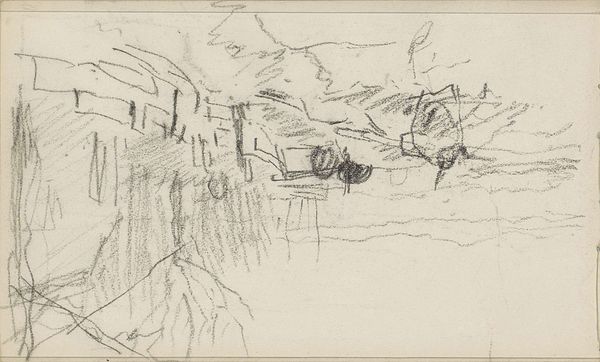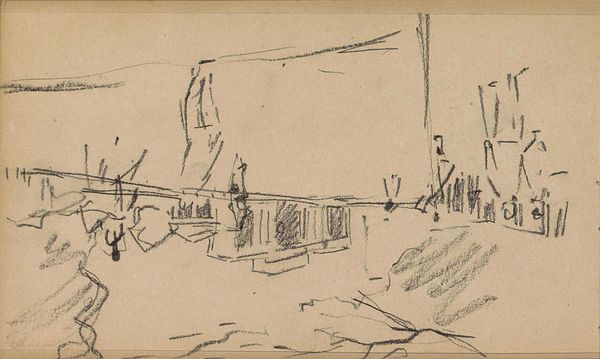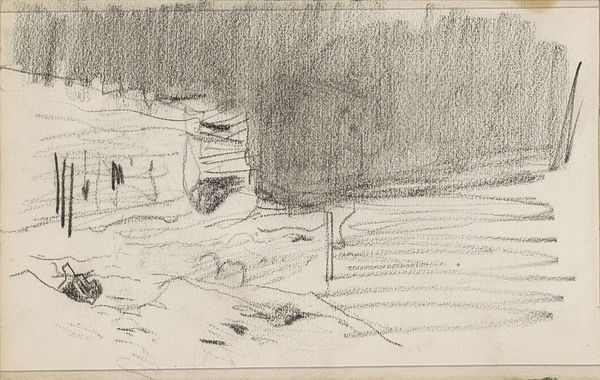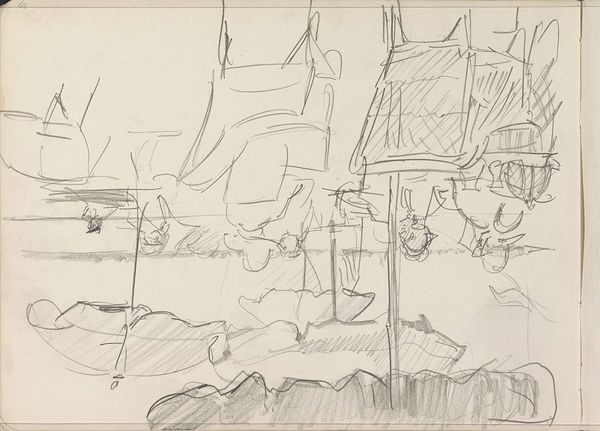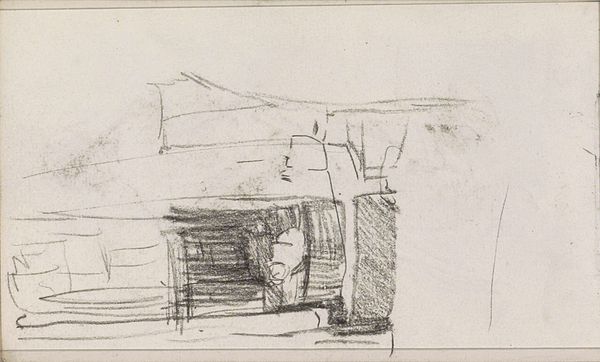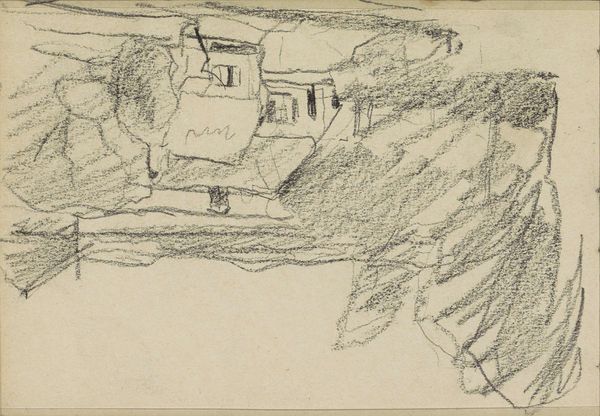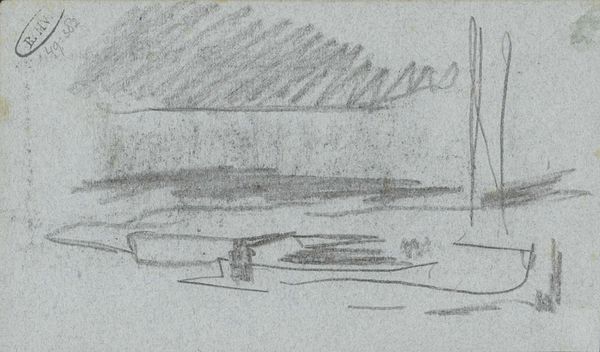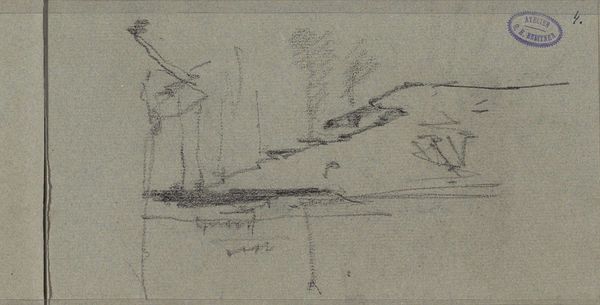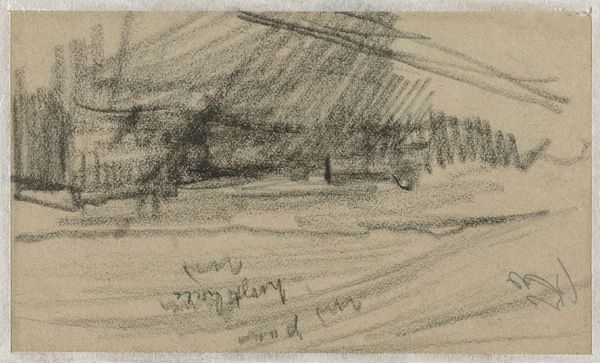
Dimensions: height 157 mm, width 233 mm
Copyright: Rijks Museum: Open Domain
Curator: Breitner’s pencil drawing, "Boats on the Damrak in Amsterdam", possibly from between 1913 and 1928, strikes me as surprisingly minimal. Editor: Strikingly bleak, actually. The grayness of the pencil, the sparse lines—it feels like a cityscape drained of life, or perhaps a memory fading at the edges. The near-absence of details conveys not just a physical place but a mood. Curator: Indeed, it is less about photographic accuracy and more about the emotional impression, capturing the feel of the location rather than its exact appearance. Breitner, with his roots in both realism and impressionism, often went for this… almost… elusive quality. Editor: And let’s think about the Damrak itself. Historically, it's been this incredibly active zone, a hub of commerce and movement. Here, those ships, which would normally represent trade and connection, appear almost ghostlike, stuck. Perhaps the drawing is speaking to the shifting economic realities of Amsterdam at the time. Curator: Fascinating point. I also wonder if his almost casual technique hides his deeper thinking. Breitner made sketches to quickly catch the essence of a scene, right? This perhaps gave him freedom, outside his well known painterly works. He maybe didn't see them as works in their own right. But like this, they do invite these open interpretations. Editor: Yes. The rawness of the pencil actually reinforces that lack of finishing, inviting us, the viewers, to become active participants in completing the story. The use of just pencil on paper emphasizes, maybe accidentally, the impermanence of both the physical place and its social conditions. Curator: Well, thinking of its impact, and if, let's say, the work feels unfinished... That feels part of its honest appeal. It shows an honest approach, and for a visitor in the Rijksmuseum, to witness this, may lead to reflecting that creating isn't about creating finished pristine works. Editor: Exactly. Maybe what moves me is how it can make us see that change, whether beautiful or brutal, is the only constant we can know. It allows room to really feel that. Thank you. Curator: Yes, indeed! It becomes a silent monument to impermanence itself. Thank you for making me realize that!
Comments
No comments
Be the first to comment and join the conversation on the ultimate creative platform.
